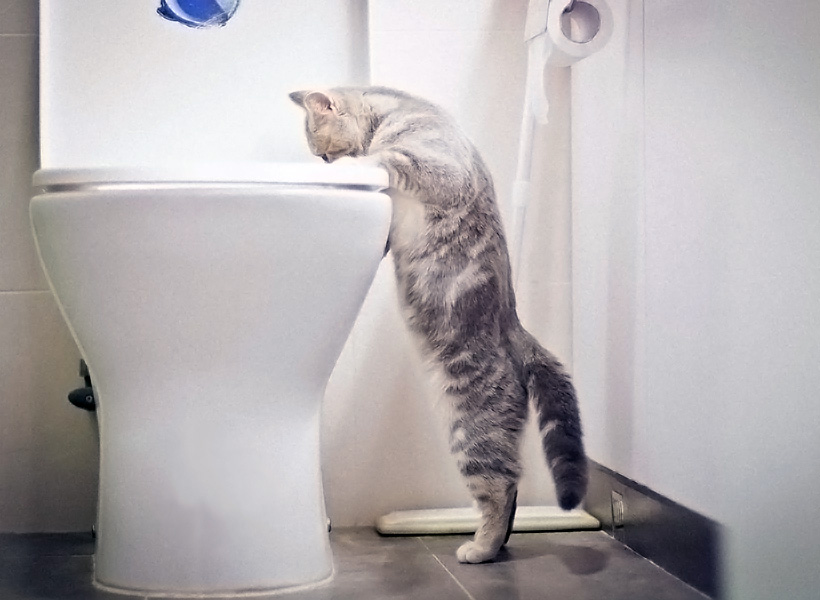Essential Reasons Why Animal Waste Must Never Be Flushed Down the Toilet
Essential Reasons Why Animal Waste Must Never Be Flushed Down the Toilet
Blog Article
This article following next pertaining to Why you should never flush dog poop down the toilet is highly fascinating. You should investigate for yourself.

When it pertains to disposing of waste, particularly animal waste, many individuals usually resort to the hassle-free choice of flushing it down the bathroom. Nonetheless, this seemingly simple remedy can have significant effects for the environment and public health. In this article, we'll explore why flushing pet waste down the commode is a bad idea and supply alternate methods for proper disposal.
Introduction
Appropriate waste disposal is important for keeping ecological sustainability and public health. While it might appear harmless to purge animal waste down the commode, it can cause various problems, both for the setting and human wellness.
Risks of flushing animal waste
Ecological impact
Flushing pet waste presents dangerous germs and pathogens into rivers, which can adversely influence water environments. These pathogens can infect water sources and damage aquatic life, interrupting delicate ecosystems.
Public health concerns
Animal waste has damaging microorganisms such as E. coli and Salmonella, which can present major health risks to human beings. Flushing animal waste down the toilet can pollute water materials, bring about the spread of illness and infections.
Alternatives to flushing
As opposed to flushing animal waste down the commode, there are a number of alternative disposal methods that are a lot more environmentally friendly and hygienic.
Composting
Composting pet waste is an environment-friendly means to throw away it. By composting, organic matter is broken down into nutrient-rich soil, which can be utilized to fertilize yards and plants.
Land fill disposal
Throwing away pet waste in a garbage dump is one more alternative. While not as environmentally friendly as composting, it is a much safer option to flushing, as it prevents the contamination of water resources.
Family pet waste disposal systems
There are customized family pet waste disposal systems offered that securely and hygienically deal with pet waste. These systems frequently use enzymes to break down waste and remove smells.
Actions to appropriate pet garbage disposal
To ensure correct disposal of animal waste, comply with these steps:
Scooping and bagging waste
Consistently scoop and bag animal waste utilizing naturally degradable bags. This avoids waste from infecting the setting.
Utilizing marked waste bins
Dispose of bagged animal waste in assigned waste bins, such as compost containers or garbage dump containers. Prevent flushing it down the toilet whatsoever expenses.
Cleaning litter boxes and pet dog areas regularly
On a get more info regular basis tidy litter boxes and family pet locations to avoid the build-up of waste and microorganisms. Use pet-safe cleaning items to keep hygiene.
Advantages of proper disposal approaches
Taking on correct disposal approaches for pet waste supplies several benefits:
Lowered environmental pollution
Proper disposal techniques minimize the risk of environmental pollution, protecting waterways and communities from contamination
Minimized threat of water contamination.
By avoiding flushing pet waste down the commode, the threat of water contamination is considerably minimized, guarding public health.
Enhanced hygiene and health
Appropriate disposal methods promote much better sanitation and health, developing a safer environment for both humans and pets.
Final thought
To conclude, purging pet waste down the toilet is dangerous to the environment and public health. By embracing alternate disposal techniques and following appropriate waste monitoring practices, we can decrease the adverse influence of animal waste and add to a cleaner, healthier planet.
What To Do With Dog Poo – The Do's And Don'ts Of Disposing Of Faeces
Dog poo bins
Some councils provide dedicated dog waste bins in popular dog-walking areas that can take dog poo that has been bagged but you can legally dispose of dog waste in any public litter bin, as long as it is securely bagged. This also applies to your wheelie bin at home.
Do not flush
Water companies do not recommend flushing dog faeces down the toilet because certain parasites can survive the water processing treatment and are potentially harmful to humans. You should also never consider flushing dog poo that has been bagged down the toilet as the bags will not break down and instead create severe blockages in the sewage system.
In the woods
The Forestry Commission promotes a ‘stick and flick’ method for dealing with waste in the woods. This means finding a stick and using it to flick any poo from off the path so that it is out of the way of other walkers. You could also bury it as long as it is not in an area where there might be livestock.
Livestock
Parasites found in dog poo can be transmitted to livestock if they inadvertently eat infected faeces that has been left on grazing land. This could result in the death of sheep or abortion in cattle so you should always make sure you pick up your dog’s waste in fields where livestock could be present.

On a get more info regular basis tidy litter boxes and family pet locations to avoid the build-up of waste and microorganisms. Use pet-safe cleaning items to keep hygiene.
Advantages of proper disposal approaches
Taking on correct disposal approaches for pet waste supplies several benefits:
Lowered environmental pollution
Proper disposal techniques minimize the risk of environmental pollution, protecting waterways and communities from contamination
Minimized threat of water contamination.
By avoiding flushing pet waste down the commode, the threat of water contamination is considerably minimized, guarding public health.
Enhanced hygiene and health
Appropriate disposal methods promote much better sanitation and health, developing a safer environment for both humans and pets.
Final thought
To conclude, purging pet waste down the toilet is dangerous to the environment and public health. By embracing alternate disposal techniques and following appropriate waste monitoring practices, we can decrease the adverse influence of animal waste and add to a cleaner, healthier planet.
What To Do With Dog Poo – The Do's And Don'ts Of Disposing Of Faeces
Dog poo bins
Some councils provide dedicated dog waste bins in popular dog-walking areas that can take dog poo that has been bagged but you can legally dispose of dog waste in any public litter bin, as long as it is securely bagged. This also applies to your wheelie bin at home.
Do not flush
Water companies do not recommend flushing dog faeces down the toilet because certain parasites can survive the water processing treatment and are potentially harmful to humans. You should also never consider flushing dog poo that has been bagged down the toilet as the bags will not break down and instead create severe blockages in the sewage system.
In the woods
The Forestry Commission promotes a ‘stick and flick’ method for dealing with waste in the woods. This means finding a stick and using it to flick any poo from off the path so that it is out of the way of other walkers. You could also bury it as long as it is not in an area where there might be livestock.
Livestock
Parasites found in dog poo can be transmitted to livestock if they inadvertently eat infected faeces that has been left on grazing land. This could result in the death of sheep or abortion in cattle so you should always make sure you pick up your dog’s waste in fields where livestock could be present.

Hopefully you enjoyed our piece about Should you flush animal waste down the toilet. Thanks for finding the time to read our content. Do you know about somebody else who is fascinated by the subject? Please feel free to share it. We thank you for reading our article about Should you flush animal waste down the toilet.
Call Today Report this page